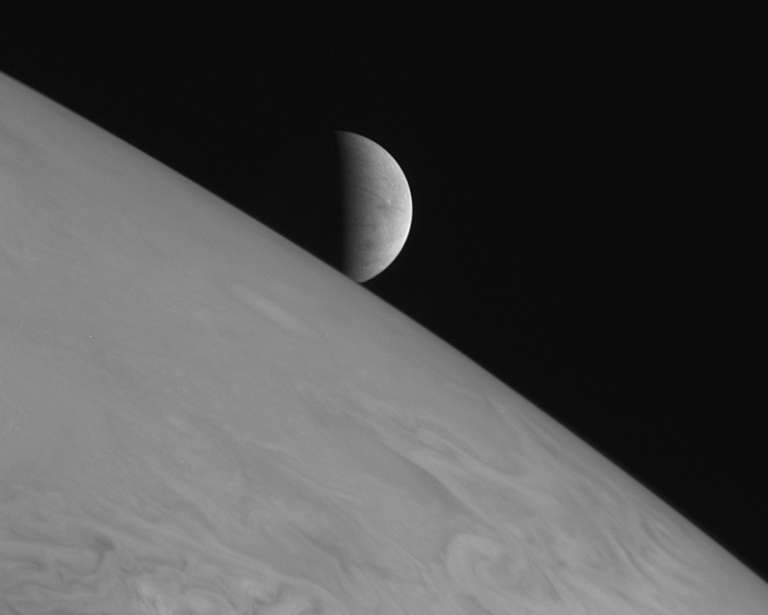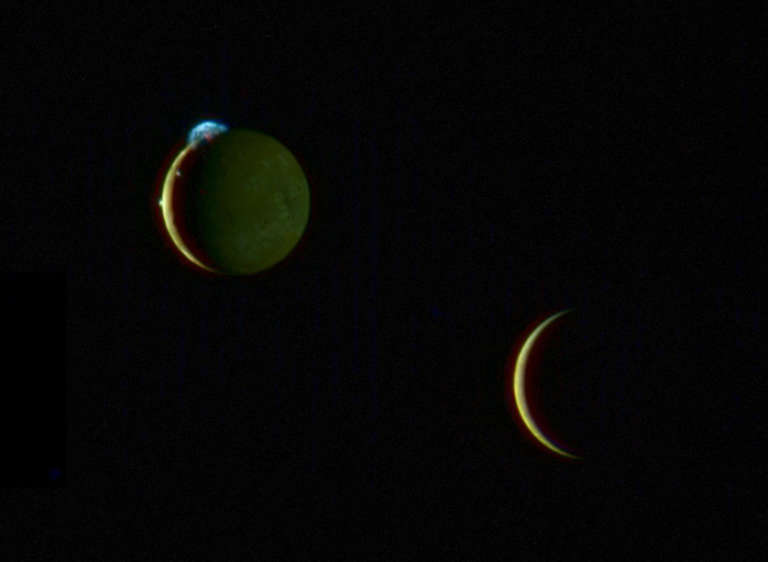Emily Lakdawalla • Apr 07, 2008
Frame a Pluto portrait
As New Horizons continues its journey (it's now approaching the orbital distance of Saturn, though it's very far from that planet in space), the mission is taking advantage of the recent experience with the Jupiter flyby to plan out the science operations for the Pluto-Charon encounter. No spacecraft can take data with all of its instruments simultaneously and return all that data to Earth. This is true of any space mission. And even if a spacecraft could take data continuously, you would still need to make decisions about where to point its cameras. Like most deep-space missions, New Horizons has sharp limitations on the amount of data it can capture. The combination of the spacecraft's high speed during the Pluto encounter and the low rate at which it can transmit data across the vast distance that separates Pluto and Earth means that New Horizons will have to store all the Pluto data onboard until after the flyby is over -- which means that scientists are now facing tough decisions about which data to take, and which opportunities to pass up.
Even with these limitations the New Horizons science team recognizes that the images returned from New Horizons may very likely be the only ones returned from a spacecraft at Pluto during any of our lifetimes, and with that in mind they want to make sure that a couple of the pictures are pretty ones. Ideally these pictures would also have scientific value, but the New Horizons mission more than most is aware of the importance of maintaining the public interest in space exploration. A spectacular and inspiring photo can serve as a rallying point for future missions. Look at Voyager 2's photo mosaic of the solar system, the last photos from the spacecraft, showing Earth as that famous "pale blue dot" -- I don't believe those pictures have much scientific value, but they have great emotional value.
While planning the Jupiter encounter, a member of the New Horizons science team (John Spencer, who has frequently contributed to this blog) posted a note on the forum unmannedspaceflight.com inviting the forum participants to figure out where and when New Horizons might point its cameras to come up with pretty pictures, using some tools predicting the orbital motions of Jupiter's moons and the New Horizons spacecraft. The science team didn't really have the time to hunt around for "Kodak Moments" -- pretty alignments of planet, moons, rings, and shadows -- so they made their analysis tools available to the public and invited submissions. The lively discussion that followed caused several "Kodak Moment" imaging opportunities to be included in the science plan, in places where they didn't interfere with the important science operations of the mission. Two of these were among the most memorable images from the flyby:


I'm sure you can see where this post is going. Now the New Horizons team is deep into the planning of the Pluto flyby, and again they don't have the time to devote to an exhaustive search for "Kodak Moments." Again John Spencer has invited public contributions to the hunt. You have to have a little bit of expertise to take advantage of the planning tools, but I know there are a lot of enthusiasts out there with the knowledge and interest necessary to allow you to participate in the search for the most beautiful images that might be taken at Pluto.
Support our core enterprises
Your support powers our mission to explore worlds, find life, and defend Earth. You make all the difference when you make a gift. Give today!
Donate

 Explore Worlds
Explore Worlds Find Life
Find Life Defend Earth
Defend Earth

